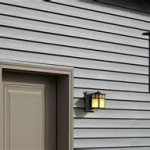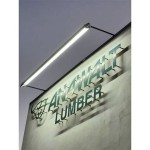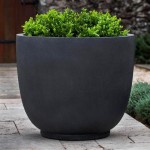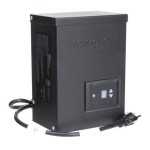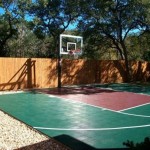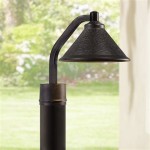How to Build Large Outdoor Planters
Large outdoor planters offer significant advantages over smaller containers, allowing for more substantial root systems and accommodating larger plants or diverse plant combinations. Building custom planters provides flexibility in size, shape, and materials to suit specific needs and aesthetic preferences.
Choosing the appropriate materials is crucial for longevity and functionality. Common options include wood (cedar, redwood, pressure-treated pine), concrete, brick, and metal. Each material presents unique characteristics in terms of durability, weight, cost, and aesthetic appeal. Wood offers a classic, natural look but requires regular maintenance to prevent rot and insect damage. Concrete provides strength and longevity but can be heavy and challenging to move once cured. Brick offers a versatile and aesthetically pleasing option with good durability. Metal, while offering a modern look, may be prone to rusting unless treated or chosen in rust-resistant varieties like galvanized steel or aluminum.
Planning the planter dimensions involves considering the intended plants' size and root systems. Larger plants require more soil volume. A good rule of thumb is to allow at least one cubic foot of soil per foot of plant height. Additionally, consider the planter's placement and whether it will be moved in the future. Larger planters filled with soil are extremely heavy.
Once the materials and dimensions are determined, gather the necessary tools. For wood planters, this typically includes a saw (circular saw or miter saw), drill, screwdriver, measuring tape, level, and safety glasses. Concrete planters require forms, mixing tools, and reinforcement materials. Brick planters necessitate mortar, trowels, and a level. Metal planters require welding equipment or appropriate fasteners depending on the design.
Constructing a wooden planter box typically involves cutting the wood to the desired lengths, assembling the pieces using screws or nails, and reinforcing the corners for stability. Adding a liner made of landscape fabric or plastic sheeting inside the box will protect the wood from moisture and extend its lifespan. Drainage holes are essential to prevent waterlogging, which can harm plant roots.
Building a concrete planter requires constructing a form using plywood or other suitable material. Reinforcement materials like rebar or wire mesh are added to the form before pouring the concrete mix. The concrete must cure for several days before the form can be removed. Pre-cast concrete forms can simplify this process.
Constructing a brick planter involves laying bricks in a desired pattern using mortar as an adhesive. Ensure the base is level and consider adding a concrete footing for stability. As with other planter types, incorporate drainage holes.
Building a metal planter involves cutting and welding metal sheets into the desired shape or assembling pre-fabricated metal components. Rust-resistant finishes or regular maintenance are crucial for preventing corrosion. Drainage holes are equally important for metal planters.
Preparing the planter for planting involves adding a drainage layer at the bottom, typically using gravel or broken pottery pieces. This layer improves drainage and prevents the soil from compacting and blocking drainage holes. Fill the planter with a high-quality potting mix suitable for the intended plants. Avoid using garden soil, which can become compacted in containers and restrict root growth.
Placement of the planter depends on the specific needs of the plants. Consider sunlight requirements, wind exposure, and accessibility for watering. Larger planters can be difficult to move once filled, so careful planning of the location is essential.
Regular maintenance of the planter is crucial for its longevity and the health of the plants. Wood planters benefit from periodic sealing or staining to protect against weathering. Metal planters may require rust treatment or repainting. Concrete and brick planters are relatively low maintenance but should be inspected for cracks or damage. Ensure proper drainage and avoid overwatering.
Choosing the right plants for large outdoor planters depends on the planter’s size, location, and the local climate. Consider the plants' mature size and growth habit. Select plants with compatible light and water requirements. Creating a visually appealing arrangement involves combining plants with varying heights, textures, and colors.
Protecting plants in large outdoor planters from extreme weather conditions may involve moving them to a sheltered location, covering them with protective cloth, or providing supplemental watering during periods of drought. Research the specific needs of the chosen plants to ensure their survival during harsh weather.
Regular fertilization is essential for plants in containers, as nutrients are depleted more quickly than in ground soil. Use a balanced, slow-release fertilizer or liquid feed according to the manufacturer's instructions. Monitor plant health and adjust fertilization as needed.

How To Build Your Own Tall Outdoor Planter Boxes Bower Power

Diy Tall Planters 2024 Budget Equestrian

Diy Modern Slat Wood Planters Huntress

How To Build A Large Diy Planter Box

Diy Large Concrete Planter Any Size For Less

Easy And Inexpensive Diy Outdoor Planter Boxes Flower Window

Diy Wooden Planters With X Side Trim

The Best Tip For Filling Large Outdoor Planters So Much Better With Age

How To Make A Rolling Planter Box I Should Be Mopping The Floor

Paver Planter Make Large Outdoor Boxes Diy Candy
Related Posts
